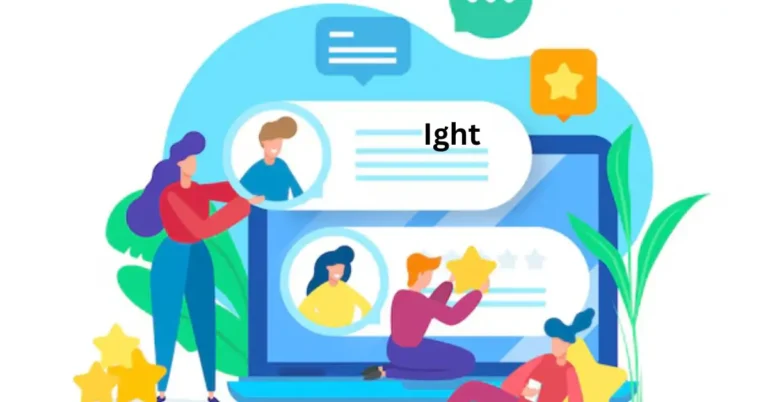Slang has a big impact on how we communicate and engage in the constantly changing world of digital communication. One such word that has become popular recently is “ight.” This colloquial shorthand meaning “alright” has become commonplace in informal discussions, especially on social media and in texts. This article explores the history, meaning, and cultural significance of the term “ight,” looking at how it mirrors larger patterns in language and communication.
Origins and Evolution of “Ight”
The term “ight” is a phonetic abbreviation of “alright,” a word that itself is a more relaxed variant of “all right.” The evolution from “all right” to “alright” occurred over time as language adapted to the needs of informal communication. The transition to “ight” represents a further simplification, reflecting the trend of shortening words for efficiency in digital communication.
1. Historical Context:
- Early Usage: The use of shortened forms and abbreviations has a long history, dating back to early forms of written communication. For example, in the 19th century, abbreviations like “Dr.” for “Doctor” and “St.” for “Saint” were common. As technology advanced, these practices adapted to fit new communication mediums.
- Digital Age: The rise of text messaging and social media platforms has accelerated the use of abbreviations and slang. Platforms like SMS, Twitter, and Instagram have fostered environments where brevity is often prized, leading to the creation and widespread use of terms like “ight.”
2. Phonetic Evolution:
- Sound Changes: The term “ight” mimics the phonetic sound of “alright” when spoken quickly or informally. This phonetic similarity allows for a seamless transition from the original term to its abbreviated form.
- Influence of Dialects: Variations in pronunciation across different English dialects may influence the adoption of terms like “ight.” For example, certain regional accents may naturally shorten words in ways that align with the use of “ight.”
Usage of “Ight” in Modern Communication
The term “ight” is predominantly used in informal contexts, particularly in digital communication. Its usage can vary depending on the platform and the relationship between the communicators.
1. Text Messaging and Instant Messaging:
- Casual Conversations: In text messaging, “ight” is often used to acknowledge or agree with something in a relaxed manner. For instance, if someone proposes a plan or makes a suggestion, responding with “ight” indicates that the message has been received and agreed upon without any formalities.
- Efficiency: The brevity of “ight” aligns with the need for quick and efficient communication in text-based interactions. Its usage allows for faster typing and a more conversational tone.
2. Social Media Platforms:
- Twitter and Instagram: On platforms like Twitter and Instagram, where character limits and brevity are crucial, “ight” fits well within the constraints. Users employ it to convey agreement, understanding, or acknowledgment in a concise manner.
- Memes and Trends: “Ight” often appears in memes and viral content, contributing to its popularity. Its use in humorous or relatable contexts helps to reinforce its place in contemporary slang.
3. Informal Speech:
- Conversational Tone: While “ight” is primarily a written term, it can also be used in spoken language, especially among younger generations. In casual conversations, it functions similarly to “okay” or “cool,” conveying a relaxed and informal tone.
Cultural Impact and Significance
The rise of “ight” reflects broader cultural trends and shifts in language use. Understanding its impact involves examining how it interacts with social dynamics, digital culture, and linguistic evolution.
1. Reflection of Digital Culture:
- Language Evolution: The evolution of “ight” highlights how digital communication influences language. As technology continues to shape how we interact, slang terms like “ight” emerge as part of this linguistic adaptation.
- Youth Culture: “Ight” is particularly prevalent among younger generations, reflecting their unique communication styles and preferences. Its use signifies a departure from formal language norms and an embrace of more relaxed, conversational forms.
2. Impact on Formal Language:
- Blurring Boundaries: The widespread use of slang terms like “ight” can blur the boundaries between formal and informal language. As these terms gain traction, they may influence how people communicate in more formal settings, leading to a greater acceptance of informal language in various contexts.
- Linguistic Innovation: The creation and adoption of terms like “ight” demonstrate the dynamic nature of language. Slang terms often reflect innovation and creativity in how people express themselves, contributing to the ongoing evolution of language.
3. Social Dynamics and Identity:
- Group Identity: Using slang terms like “ight” can help individuals connect with specific social groups or communities. It serves as a marker of shared cultural knowledge and identity, reinforcing group cohesion and belonging.
- Generational Differences: The term also highlights generational differences in language use. Older generations may view “ight” as informal or unconventional, while younger generations embrace it as part of their everyday communication.
Conclusion
The term “ight” exemplifies the dynamic and ever-evolving nature of language in the digital age. As a phonetic abbreviation of “alright,” it reflects broader trends in communication, including the need for efficiency and the influence of digital culture. Its usage in text messaging, social media, and informal speech highlights its role in contemporary communication and its impact on language evolution.
As we continue to navigate the digital landscape, terms like “ight” remind us of the fluid nature of language and the ways in which it adapts to new contexts and technologies. Understanding these changes provides insight into how we communicate and connect in an increasingly digital world.

